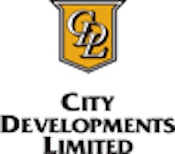Imagine going to a bank to ask for your energy-efficient, environmentally-friendly building to be refinanced through a green bond, only to be told by the banker that there would be no financial return in doing so. Should you go ahead with it anyway?
Yes, was the consensus from a panel of business leaders at the International Green Building Conference (IGBC) in September.
Talking about Swire Properties’ experience launching its first green bond In January, general manager of technical services and sustainable development, Raymond Yau, said that there were benefits to issuing green bonds even if companies have no liquidity issues. Some of the funds Swire raised were used to upgrade the energy efficiency of one of the Hong Kong-listed company’s properties.
“It’s estimated we can save 4 million kilowatt hours a year, which is equivalent to about HK$6 million (US$766,898),” he said. “In other words, if I didn’t do it, I would be paying the Hong Kong utility this HK$6 million or even more.”
Another Asian developer to have used funding for retrocommissioning is City Developments Limited (CDL), which was the first Singapore company ever to issue a green bond last year. Chief sustainability officer, Esther An, told the audience that the company saves S$1.2 million (US$877,282) annually from reduced water and energy consumption from the retrocommissioning.
Its green bond raised funds to refinance the loan taken out in 2012 to implement water and energy saving energy measures in CDL’s Republic Plaza building in Singapore.
But a member of the audience, Eco-Business research director Tim Hill, commented that the business cases presented appeared “small” when compared to the overall amount of funding invested in constructing or retrofitting.
“Is the business case for green bonds more challenging to explain than other forms of investments?” he asked.
Yau responded: “Our revenue is huge, so reflecting the profit from this investment is not a big deal.” But he said even a small percentage helps considering the size of Swire Properties’ overall portfolio, for which it spends HK$500 million on electricity bills alone.
For low-margin businesses such as hotels, “a small saving can quickly reflect in their profit and overheads, making [issuing a green bond for retrocomissioning] a very justifiable business case,” Yau said.
Such projects provide long term, and not just immediate, cost savings, added CDL’s An. “But that is not all we’re looking at. Branding is priceless and revenue generation comes with stronger branding and higher quality products.”
In the eight months after the Singapore-based property developer issued its maiden green bond, it attracted 55 new investors who were signatories to the United Nations’ Principles for Responsible Investment. An said: “[Issuing the green bond] raised our profile, and I received many more calls from big investors, a lot of whom are increasing the number of investments into companies that show ESG [environment, social and governance] commitment, in their portfolios.”
“Having said that, S$1.2 million cost savings per year is still good, and a recurrent cost saving,” she said.
Speaking from the viewpoint of a financial institution, Mikkel Larsen, managing director and chief sustainability officer of Singapore’s DBS Bank, said that a green bond demonstrates commitment to sustainability. “It’s saying that by issuing this green bond, I commit to reporting on my green initiatives and assets,” he elaborated.
But the main reason for the biggest bank in Southeast Asia to get into green bonds—which it did in 2017—was to create new liquidity and reach new investors, he said. “The idea here is that by issuing a green bond, we would have an opportunity to speak to an investor group that would otherwise not even know about DBS. That, for us, was the primary reason.”
The perfect green bond asset
Buildings that are energy efficient and have a smaller impact on the environment, known as green buildings, are the perfect asset for green bonds, it was said on the panel.
“Green buildings have key attributes you’d want in a green asset: a single asset big enough to be financed without a pool of assets; and the green merits can be easily evaluated and certified,” said DBS’ Larsen.
But he cautioned against the dangers of greenwashing around green bonds and the misperception that these instruments should be used to fund something new. He said even if an existing green building had successfully taken out a loan for upgrading, it was “normal and acceptable” to refinance the first loan.
“This has led some people to feel that [green bonds] are greenwash,” Larsen added.
Looking ahead, DBS is considering green bond options for the retail market, which tend to be smaller in amount and open to non-professional investors. “All our focus today as bankers has been on institutional investors, [but] one thing we’re thinking about and beginning to see more of is products that allow retail investors to invest.”
This remains an unexplored segment of the green bond market, which is unsurprising given that bonds for environmentally-friendly projects remain smaller than 1 per cent of all issued bonds.
Speaking to Eco-Business on the sidelines of IGBC, An said more banks should consider targeting green bonds at retail investors. She remarked that banks were increasingly open to issuing bonds in local currencies rather than US dollars, and issuing bonds for smaller amounts.
“At a conference I was at recently, some small-to-medium enterprises said, ‘I’m a small business and I only need US$2 million and cannot meet the minimum bond amount, so how can I possibly issue a green bond?’” she recalled.
Retrofitting a single building—in line with Singapore’s target to green 80 per cent of its building stock by 2030—may not cost millions of dollars, but it’s not easy to pay cash, An added.
“So if I were a bank, I’d definitely look at retail green bonds. Even US$5 million or US$10 million is still business, and the interest is high,” she said.
















